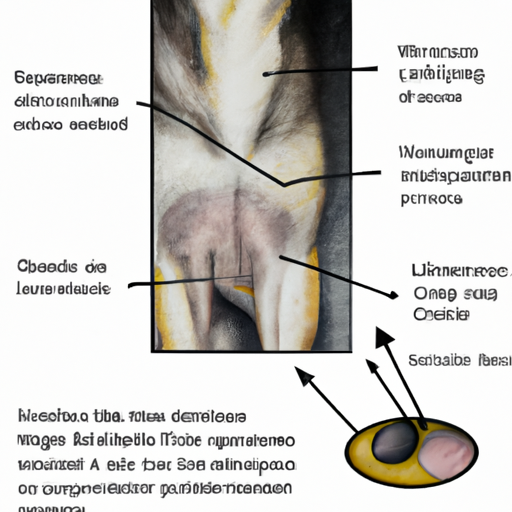As a loving caregiver to your furry friend, it’s essential to understand the potential health issues they could face. One such issue that you might have heard about is a seroma in dogs. Throughout this article, we’ll dive deep into what a seroma is, how it affects dogs, its causes, symptoms, diagnosis, treatment options, and preventive measures.
Table of Contents
- Understanding Seromas
- Causes of Seromas in Dogs
- Symptoms and Diagnosis
- Treatment Options
- Preventive Measures
- Frequently Asked Questions
Key Takeaways
- Seromas are fluid-filled pockets that can form in dogs after surgery or physical trauma.
- The primary cause of seromas is tissue damage during surgery or trauma.
- Symptoms include visible swelling, pain, and discomfort.
- Treatment typically involves drainage, compression, and possible surgical removal.
- Preventive measures include careful post-surgical care and monitoring of the dog’s activities to avoid physical trauma.
Understanding Seromas
A seroma is a pocket of serous fluid that accumulates in a region of your dog’s body following surgery or physical trauma. This serous fluid is clear, pale yellow, and originates from the blood plasma or secretions of serous glands. In essence, a seroma is your dog’s body’s response to a region of healing or inflammation.
In some cases, you might notice a seroma as a visible lump or swelling under your dog’s skin. It’s worth noting that seromas are not a form of cancer or tumor and are generally non-life-threatening. However, they can cause discomfort and pain, and if left untreated, can lead to complications. For more in-depth information on seromas, feel free to visit the American Kennel Club’s comprehensive guide on Seromas.
Causes of Seromas in Dogs
Seromas often form as a result of tissue damage during surgery or from physical trauma. They are particularly common following orthopedic surgeries, such as cruciate ligament repair or fracture repair, where significant soft tissue trauma occurs.
In addition, dogs that are active and adventurous may be more prone to seromas due to the higher risk of physical trauma. For instance, a dog might develop a seroma after running into a hard object or falling from a height.
Here is a table summarizing the common causes of seromas in dogs:
| Cause | Description |
|---|---|
| Surgery | Tissue damage during surgery can lead to seroma formation |
| Physical Trauma | Injuries from accidents or rough play can cause seromas |
Symptoms and Diagnosis
The most common symptom of a seroma in dogs is a visible swelling or lump under the skin. This swelling is typically soft and fluctuant, meaning it can change shape when touched. Your dog may also show signs of discomfort or pain, especially if the seroma is large or located in a sensitive area.
To diagnose a seroma, your veterinarian will typically perform a physical examination and may use imaging techniques, such as ultrasound or radiography. In some cases, a fine needle aspirate may be performed, where a small amount of fluid is extracted from the swelling for analysis.
Treatment Options
The primary treatment for seromas in dogs involves drainage of the fluid. This can often be accomplished using a needle and syringe, although in some cases, a temporary drain may be inserted.
In more severe cases, surgical removal of the seroma may be necessary, especially if it continues to refill with fluid. Your veterinarian will discuss the best treatment options for your dog based on the size and location of the seroma, as well as their overall health.
For more detailed information on treatment options, consider visiting this comprehensive guide on post-surgical care in dogs.
Preventive Measures
Preventing seromas primarily involves careful post-surgical care and monitoring your dog’s activities to avoid physical trauma. Following surgery, ensure your dog rests and does not engage in strenuous activity that could disrupt the healing process.
Regular check-ups with your veterinarian are also essential to detect any potential issues early on. For more tips on preventing health issues in dogs, One Top Dog offers a wealth of resources.
Frequently Asked Questions
1. Are seromas life-threatening?
No, seromas are generally not life-threatening. However, they can cause discomfort and pain, and if left untreated, they can lead to complications.
2. Can I prevent my dog from developing a seroma?
While you can’t completely prevent the possibility of a seroma, careful post-surgical care and monitoring your dog’s activities to avoid physical trauma can significantly reduce the risk.
3. How long does it take for a seroma to heal?
The healing time can vary depending on the size of the seroma and the overall health of the dog. With proper care and treatment, most seromas resolve within a few weeks.
In conclusion, being aware of what a seroma is and how it can affect your dog is part of being a responsible and caring pet owner. By staying informed, you can ensure your furry friend gets the best care possible. For more health-related information for your dog, visit One Top Dog’s Health Section.



